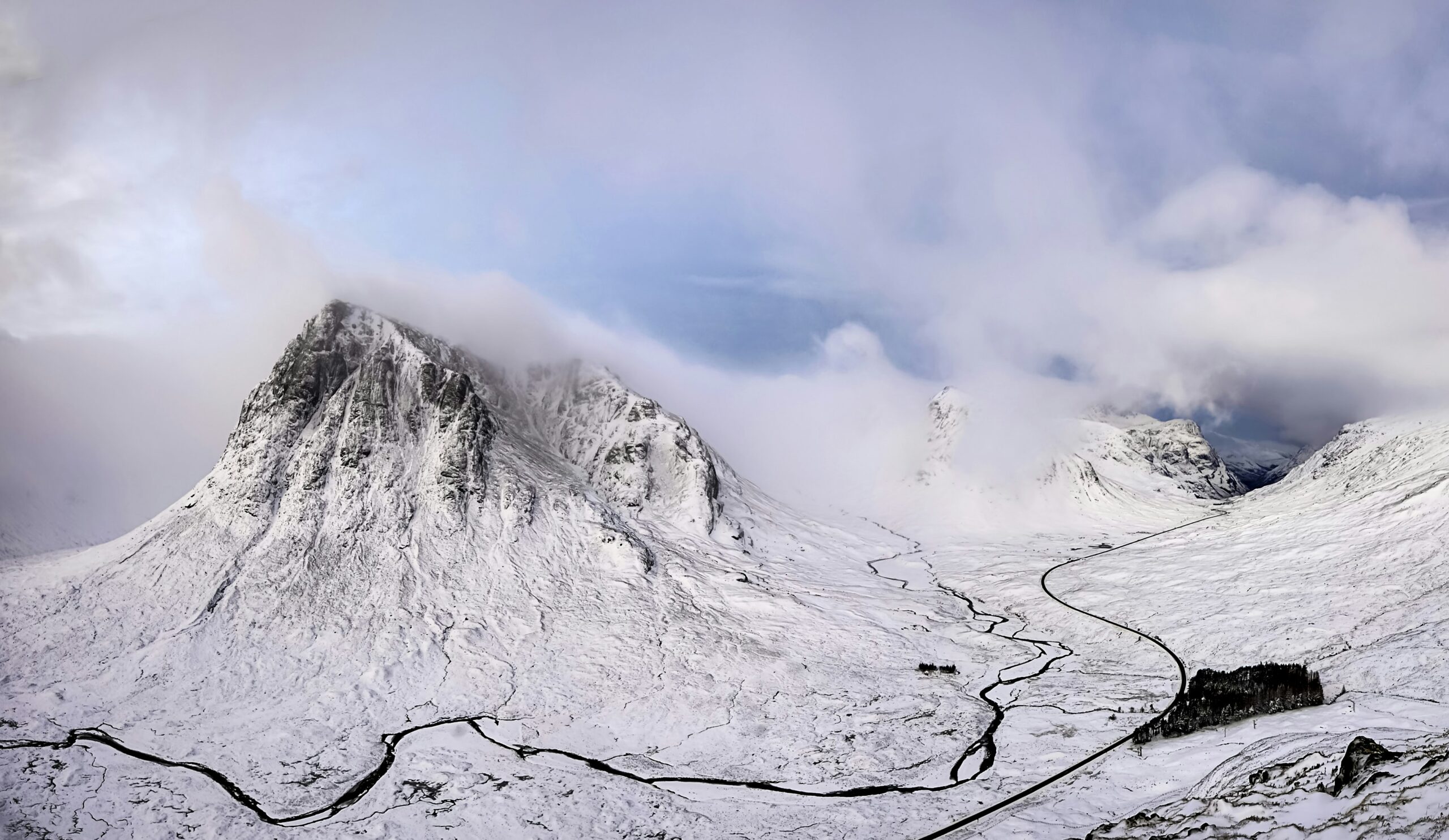Imagine standing atop the majestic Mount Shasta, with crisp mountain air filling your lungs and breathtaking views stretching as far as the eye can see. However, amidst the beauty and exhilaration, it's crucial to understand the potential risks of altitude-related fatigue on this towering peak. As you ascend to higher altitudes, your body faces a unique set of challenges that can lead to symptoms such as headaches, nausea, and dizziness. In this article, we will explore the dangers of altitude-related fatigue on Mount Shasta and provide insights on how to mitigate these risks, ensuring a safe and enjoyable adventure to this stunning natural wonder.
Understanding Altitude-related Fatigue
Altitude-related fatigue, also known as altitude sickness, is a condition that can affect individuals when they ascend to high altitudes too quickly. It is caused by the decrease in oxygen levels and the reduced air pressure at higher altitudes. As a result, the body may struggle to adjust to these changes, leading to various symptoms and complications.
How does altitude affect the body?
Altitude affects the body in several ways. As you climb higher, the air becomes thinner, which means there is less oxygen available for your body. This decrease in oxygen can lead to a variety of symptoms such as shortness of breath, dizziness, fatigue, and headaches. Additionally, the reduced air pressure at high altitudes can also impact bodily functions, resulting in issues like dehydration and difficulty digesting food.

What does altitude-related fatigue feel like?
Altitude-related fatigue can manifest in various ways, and the symptoms can vary from person to person. Some common signs include fatigue, headache, dizziness, nausea, loss of appetite, and difficulty sleeping. These symptoms typically occur within the first 24 to 48 hours after ascending to a higher altitude and usually subside as the body adapts. However, if the symptoms worsen or persist, it may be a sign of more severe altitude sickness.
Overview of Mount Shasta
Mount Shasta, located in Northern California, is an iconic peak that stands at an impressive elevation of 14,179 feet (4,322 meters). It is a stratovolcano known for its majestic beauty and challenging climbing conditions. With its prominent presence and snowy slopes, Mount Shasta attracts climbers from all over the world, ranging from experienced mountaineers seeking a technical challenge to adventurers looking to explore its natural wonders.

General characteristics of Mount Shasta
Mount Shasta boasts an impressive prominence of 9,822 feet (2,994 meters), making it one of the most visually striking mountains in the United States. It features multiple glaciers, including the Whitney Glacier, which is the longest in California. The mountain offers a variety of climbing routes, each with its own unique challenges and rewards. From the classic Avalanche Gulch route to more technical ascents like the Hotlum-Bolam Ridge, Mount Shasta provides options for climbers of different skill levels.
Climbing history and routes
The climbing history of Mount Shasta dates back centuries, with Native American tribes considering it a sacred place. Today, it attracts climbers from all walks of life, including recreational enthusiasts and professional mountaineers. The most popular route, Avalanche Gulch, starts from the Bunny Flat trailhead and follows a direct path to the summit. Other routes, such as the West Face and Casaval Ridge, offer more technical challenges for experienced climbers. Each route presents its own set of dangers and requires proper preparation and skill.

Unique climatic conditions of Mount Shasta
Mount Shasta possesses a unique climate that contributes to the challenges faced by climbers. Its high elevation and exposed slopes result in rapidly changing weather conditions, including sudden temperature shifts, strong winds, and heavy snowfall. The mountain's position also makes it susceptible to the formation of lenticular clouds, which can indicate powerful, unpredictable winds. These climatic conditions demand climbers to be prepared for rapidly changing circumstances and to have the necessary skills to navigate through them safely.
The Interplay Between Mount Shasta's Conditions and Altitude
Effect of Mount Shasta's altitude on climbers The altitude of Mount Shasta poses a significant challenge to climbers. As one ascends higher, the oxygen levels decrease, making it harder for the body to function optimally. The effects of altitude, combined with the physical exertion of climbing, can lead to fatigue, decreased physical performance, and impaired cognitive abilities. This interplay between altitude and physical exertion adds an extra layer of difficulty to the climb and increases the risk of altitude-related fatigue.
Specific considerations for climbing Mount Shasta Climbing Mount Shasta requires careful planning and consideration of various factors. Proper acclimatization is crucial to reduce the risk of altitude-related sickness. Climbers should allow themselves enough time to gradually adjust to the increasing altitude, typically by spending a few days at lower elevations before attempting the summit. In addition, climbers must be prepared for the challenging terrain, extreme weather conditions, and potential hazards such as crevasses and avalanches. Proper equipment, navigation skills, and a strong understanding of mountain safety principles are essential.
How does Mount Shasta's climate contribute to altitude-related fatigue? Mount Shasta's unique climatic conditions can contribute to altitude-related fatigue. The extreme weather changes and cold temperatures can make it challenging to maintain adequate hydration and energy levels. Additionally, the heavy snowfall and difficult terrain require increased effort and can result in physical exhaustion. Combined with the effects of altitude, these factors increase the likelihood of experiencing fatigue and other symptoms of altitude sickness.
Risks of Altitude-related Fatigue on Mount Shasta
Physical challenges The physical challenges faced by climbers on Mount Shasta are numerous and demanding. The combination of high altitude, steep slopes, and heavy packs can put significant strain on the body. Climbers may experience exhaustion, muscle fatigue, and difficulty breathing due to the reduced oxygen levels. These physical challenges can impair a climber's ability to navigate safely and increase the risk of accidents or injuries.
Mental challenges Climbing Mount Shasta can also present significant mental challenges. The long hours of exertion, exposure to the elements, and the isolation of the mountain can take a toll on a climber's mental well-being. Altitude-related fatigue can further exacerbate these challenges, leading to decreased focus, impaired decision-making, and increased risk-taking behavior. The mental resilience required to overcome these challenges cannot be underestimated, as it plays a crucial role in ensuring a safe and successful climb.
Potential risks for inexperienced climbers Inexperienced climbers are particularly susceptible to the risks associated with altitude-related fatigue on Mount Shasta. The lack of familiarity with high-altitude environments and limited experience in managing physical and mental challenges can increase the likelihood of experiencing severe altitude sickness symptoms. Inexperience can also lead to poor judgment, inadequate preparation, and an underestimation of the mountain's demands. It is crucial for inexperienced climbers to seek proper guidance, undertake appropriate training, and gain experience in less demanding environments before attempting Mount Shasta.
Acute Mountain Sickness on Mount Shasta
Symptoms of Acute Mountain Sickness Acute Mountain Sickness (AMS) is a common form of altitude-related sickness that can occur on Mount Shasta. Symptoms of AMS include headache, nausea, dizziness, fatigue, shortness of breath, and difficulty sleeping. These symptoms typically develop within the first 24 to 48 hours after ascent and may subside as the body acclimatizes. However, severe or worsening symptoms should not be ignored, as they may indicate more severe forms of altitude sickness.
Risk factors and preventative measures Several risk factors can increase the likelihood of developing AMS on Mount Shasta. These include climbing too quickly, lack of proper acclimatization, dehydration, and individual susceptibility. To prevent AMS, climbers should ensure a gradual ascent, allowing time for their bodies to adjust to the increasing altitude. Staying adequately hydrated, maintaining a balanced diet, and avoiding alcohol and tobacco can also help reduce the risk of AMS. In some cases, medication such as acetazolamide may be prescribed to aid acclimatization.
Treatment for Acute Mountain Sickness If symptoms of AMS develop, it is crucial to take them seriously and respond appropriately. The best approach is to descend to a lower altitude, where the body can recover more effectively. Resting, rehydrating, and maintaining a comfortable body temperature can alleviate mild symptoms. However, for severe or worsening AMS symptoms, immediate descent and medical attention are necessary. Recognizing the signs of AMS and responding promptly is vital for managing this condition effectively and ensuring the safety of climbers on Mount Shasta.
High Altitude Pulmonary Edema (HAPE) and High Altitude Cerebral Edema (HACE)
Understanding HAPE and HACE HAPE and HACE are two severe forms of altitude-related sickness that can occur on Mount Shasta. HAPE involves the accumulation of fluid in the lungs, leading to symptoms such as persistent cough, shortness of breath, chest tightness, and rapid breathing. HACE, on the other hand, refers to the swelling of the brain, resulting in symptoms such as confusion, disorientation, loss of coordination, severe headache, and changes in behavior. Both conditions are potentially life-threatening and require immediate medical attention.
Why are climbers of Mount Shasta at risk? Climbers on Mount Shasta are at an increased risk of developing HAPE and HACE due to the mountain's high altitude and demanding climbing conditions. The rapid ascent, combined with physical exertion and exposure to extreme weather, can create a perfect storm for the development of these conditions. Additionally, the variability of individual responses to altitude can make it difficult to predict who might be susceptible to HAPE and HACE, emphasizing the importance of being vigilant and prepared for these potential risks.
Preventing and dealing with HAPE and HACE on Mount Shasta Preventing HAPE and HACE starts with proper acclimatization and gradual ascent. Climbers should be aware of the symptoms and take them seriously, using them as a guide to make informed decisions about continuing their climb. If symptoms of HAPE or HACE develop, immediate descent to a lower altitude is critical to prevent further progression of these conditions. Seeking medical assistance should be a top priority, as specialized treatment, such as supplemental oxygen or hyperbaric chambers, may be necessary.
Case Studies of Altitude-related Fatigue on Mount Shasta
Compilation of documented cases Several documented cases highlight the risks and challenges associated with altitude-related fatigue on Mount Shasta. These case studies involve climbers of different skill levels, from experienced mountaineers to less experienced adventurers. They demonstrate the wide range of symptoms and complications that can arise, including AMS, HAPE, and HACE. These case studies serve as important reminders of the need for proper preparation, experienced guidance, and cautious decision-making on the mountain.
What common factors can be identified? While each case study is unique, several common factors can be identified. Rapid ascent, inadequate acclimatization, poor physical fitness, and the absence of experienced guides are frequent themes among these cases. In some instances, climbers pushed themselves beyond their limits or ignored early warning signs, leading to more severe complications. Understanding these common factors provides valuable insights into the importance of proper preparation and informed decision-making in mitigating the risks associated with altitude-related fatigue.
Learnings from these cases The case studies emphasize the importance of respecting the challenges posed by altitude-related fatigue on Mount Shasta. They highlight the need for climbers to prioritize their safety and well-being over reaching the summit at all costs. Adequate preparation, including physical training, acclimatization, and obtaining the necessary skills and knowledge, is essential for a successful ascent. Additionally, these cases underscore the value of experienced guides and mentors, whose expertise and guidance can significantly enhance climbers' safety on the mountain.
Preventing Altitude-related Fatigue on Mount Shasta
Pre-climbing preparations Preparation is key to preventing altitude-related fatigue on Mount Shasta. Climbers should engage in physical training to develop endurance, strength, and cardiovascular fitness. Pre-climbing hikes, preferably at higher elevations, can aid in acclimatization. Familiarizing oneself with the mountain's routes, weather patterns, and potential hazards is also crucial. Gathering the appropriate gear, including layered clothing, high-quality boots, and sufficient food and water supplies, is essential for a safe and comfortable climb.
Safety measures during the climb During the climb, there are several safety measures climbers should employ to minimize the risk of altitude-related fatigue. Gradual ascent and proper acclimatization should be prioritized, allowing the body to adapt to the changing conditions. Staying well-hydrated and nourished is paramount, as dehydration and malnutrition can exacerbate altitude sickness symptoms. Regular breaks for rest and recovery, especially in challenging sections of the climb, are essential. Additionally, closely monitoring symptoms and making informed decisions based on one's physical and mental state can help prevent further complications.
Recognizing and responding to altitude-related fatigue Recognizing the early signs of altitude-related fatigue is crucial for preventing further complications. Symptoms such as headache, shortness of breath, fatigue, and dizziness should not be ignored. Climbers must be honest with themselves and their climbing partners, communicating openly about any symptoms they may be experiencing. If symptoms persist or worsen despite rest and hydration, immediate descent is necessary to avoid further danger. It is essential to prioritize personal safety and make informed decisions, even if it means abandoning the climb.
Role of Guides and Rescue Teams on Mount Shasta
How can guides help prevent altitude-related fatigue? Experienced guides play a significant role in preventing altitude-related fatigue on Mount Shasta. They possess a wealth of knowledge and expertise in navigating the mountain's challenges and can provide valuable guidance to climbers. Guides can help assess climbers' fitness levels and ensure appropriate acclimatization strategies are followed. They can also monitor climbers for symptoms of altitude sickness and make informed decisions regarding the safety and well-being of the group. Having a guide can significantly enhance climbers' safety and increase their chances of a successful and enjoyable climb.
Capabilities of rescue teams in challenging situations In challenging situations, when climbers face severe altitude sickness or other emergencies, rescue teams are essential. These teams consist of highly trained professionals who specialize in mountain rescue operations. They have the skills and equipment necessary to perform high-altitude rescues and provide medical assistance. Rescue teams are well-versed in identifying and responding to altitude-related sickness and can provide essential care while facilitating a safe descent. Their capabilities are crucial in ensuring the well-being and survival of climbers facing altitude-related challenges on Mount Shasta.
Summarizing the Risks of Altitude-related Fatigue on Mount Shasta
Key risks for different types of climbers Altitude-related fatigue poses risks to climbers of all skill levels on Mount Shasta. Inexperienced climbers may be more susceptible to severe symptoms due to a lack of acclimatization and knowledge. Experienced climbers, while more familiar with the mountain and its demands, are not immune to altitude sickness. The physical and mental challenges associated with climbing at high altitudes can affect individuals differently, reinforcing the need for proper preparation, cautious decision-making, and a thorough understanding of one's limits.
Importance of understanding and respecting the mountain's conditions Understanding and respecting the conditions of Mount Shasta is of utmost importance in mitigating the risks of altitude-related fatigue. The mountain's high altitude, extreme weather, and variable terrain demand a combination of physical fitness, technical skills, and mountain sense. Climbers must recognize that reaching the summit should never come at the expense of their safety. Respect for the mountain's unpredictable nature and readiness to adjust plans based on changing conditions are essential for a successful and safe climb.
Conclusion: safe practices for a successful climb To ensure a safe and successful climb on Mount Shasta, climbers must prioritize their well-being and take measures to prevent altitude-related fatigue. Adequate physical conditioning, gradual acclimatization, and proper gear are essential. Monitoring symptoms, heeding warning signs, and making informed decisions based on one's physical and mental state are crucial. Engaging the expertise of experienced guides and acknowledging the capabilities of rescue teams can significantly enhance climbers' safety. Above all, understanding the risks, respecting the mountain's conditions, and maintaining a mindset of caution and preparedness are integral to a satisfying and secure climb on Mount Shasta.
